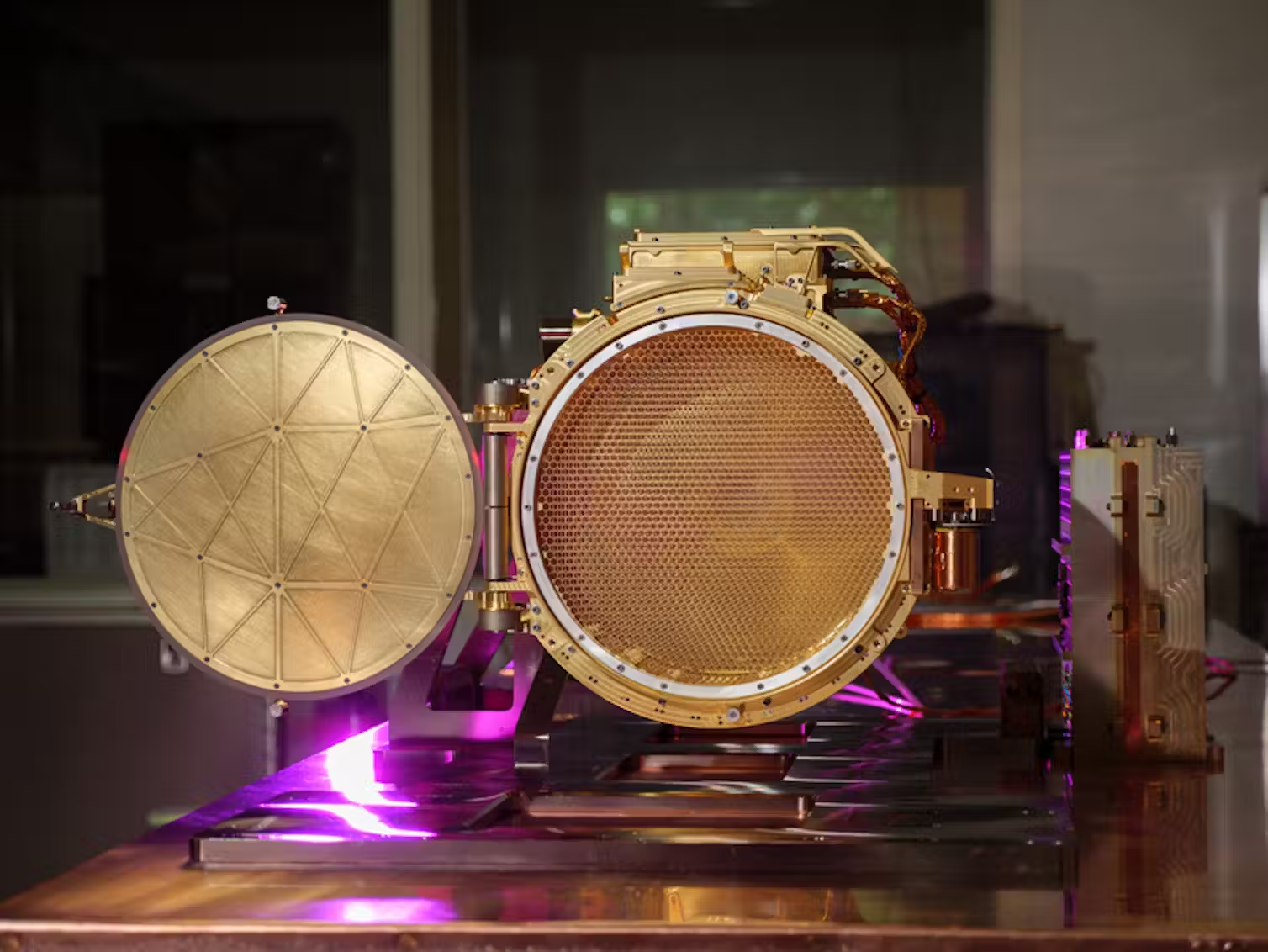Internal structure of Enceladus based on data from the Cassini probe. Credits: NASA/Jpl-Caltech
Among Saturn’s numerous natural satellites, one stands out among the others as it appears to have the makings of support life as we know it. The moon Enceladus, 500 kilometers in diameter, is home to an ocean of liquid water beneath its frozen crustwhich extends across the entire surface of the moon.
A series of geysers at the south pole of the satellite they project gas and into space ice granules formed from ocean water. This phenomenon, known as cryovolcanism, has provided a key piece of knowledge for that otherwise inaccessible ocean.
From 2004 to 2017, the Cassini probe studied Saturn, its rings and its main satellites, including Enceladus, producing spectacular results. Cassini’s designers didn’t plan to analyze the ice grains that Enceladus was actively emitting, but they still included a dust analyzer in the probe equipment. This tool succeeded in measure individually the ice granules emitted and provided researchers with information on composition of the oceanhidden under tens of kilometers of icy crust.


Possible scheme for Enceladus cryovolcanism. Credits: NASA/Jpl/Space Science Institute
Enceladus’ rocky core probably interacts with the ocean of water through hydrothermal vents, hot springs bubbling up on the ocean floor, which on Earth may have been where they developed the first building blocks of life.
One of Jupiter’s moons, Europa, also has an ocean that extends beneath its icy crust. Ice granules float above the surface, and some scientists think Europa may even have geysers that shoot granules into space, like Enceladus.
In the exciting hypothesis that life forms, such as bacteria, are present in these oceans, scientists wonder whether it would be technically possible to find traces of them in the ice grains coming from the deep sea of the two icy moons.
Fabian Klennera planetary scientist and astrobiologist at the University of Washington, led a study, published last month in Science Advanceswhich investigates the possibility for a future mission of locate cellular material within individual ice grains of Enceladus and Europa.


Fabian Klenner, University of Washington
The bottom line is that the spectrometric fingerprint of any bacteria present would be clearly identifiableeven if an ice grain contained very little organic substance, much less than a single cell.
Furthermore, the study demonstrates the advantage of analyzing individual ice grains over those of a diluted sample from a heterogeneous plume.
“Like those on Earth, Enceladus’ ocean contains salt, mainly sodium chloride, common table salt,” explains Klenner in an article published in The Conversation. “The ocean also contains various carbon-based compounds and is subject to a process called tidal heating that generates energy within the satellite. Liquid water, carbon-based chemistry and energy are all key ingredients for life.”
In 2023, Klenner co-authored a study that found sodium phosphates in ice grains from Enceladus’ ocean. Phosphate, a form of phosphorus, is a key element for all life on Earth. It is part of DNA, cell membranes and bones. It was the first time researchers detected this compound in an extraterrestrial water ocean.
The icy moons of Jupiter and Saturn are therefore of particular interest for NASA and ESA, which already have or have planned space mission towards these objectives. In particular, NASA’s Europa Clipper mission is scheduled to launch in October 2024 and arrive at Jupiter in April 2030.


The Suda instrument, SUrface Dust Analyzer, of the NASA Europa Clipper mission. Credits: NASA/Cu Boulder/Glenn Asakawa
One of the two mass spectrometers Europa Clipper is equipped with, the Surface Dust Analyzer, is designed for the analysis of individual ice grains.
According to Klenner, who is affiliated with the mission for this spectrometer, the new study demonstrates that this instrument will be able to detect even minimal fractions of a bacterial cell, if present in a few emitted ice granules.
“With the short-term plans of these space agencies and the results of our study, the prospects for future space missions to Enceladus or Europa are definitely exciting,” concludes Klenner. “We now know that with current and future instrumentation, scientists should be able to find out if there is life on one of these two moons.”
To know more:
- Read on Science Advances the study “How to identify cell material in a single ice grain emitted from Enceladus or Europa”, by Fabian Klenner, Janine Bönigk, Maryse Napoleoni, Jon Hillier, Nozair Khawaja, Karen Olsson-Francis, Morgan L. Cable, Michael J. Malaska , Sascha Kempf, Bernd Abel and Frank Postberg
Tags: Identifying cells Enceladus ice grains








